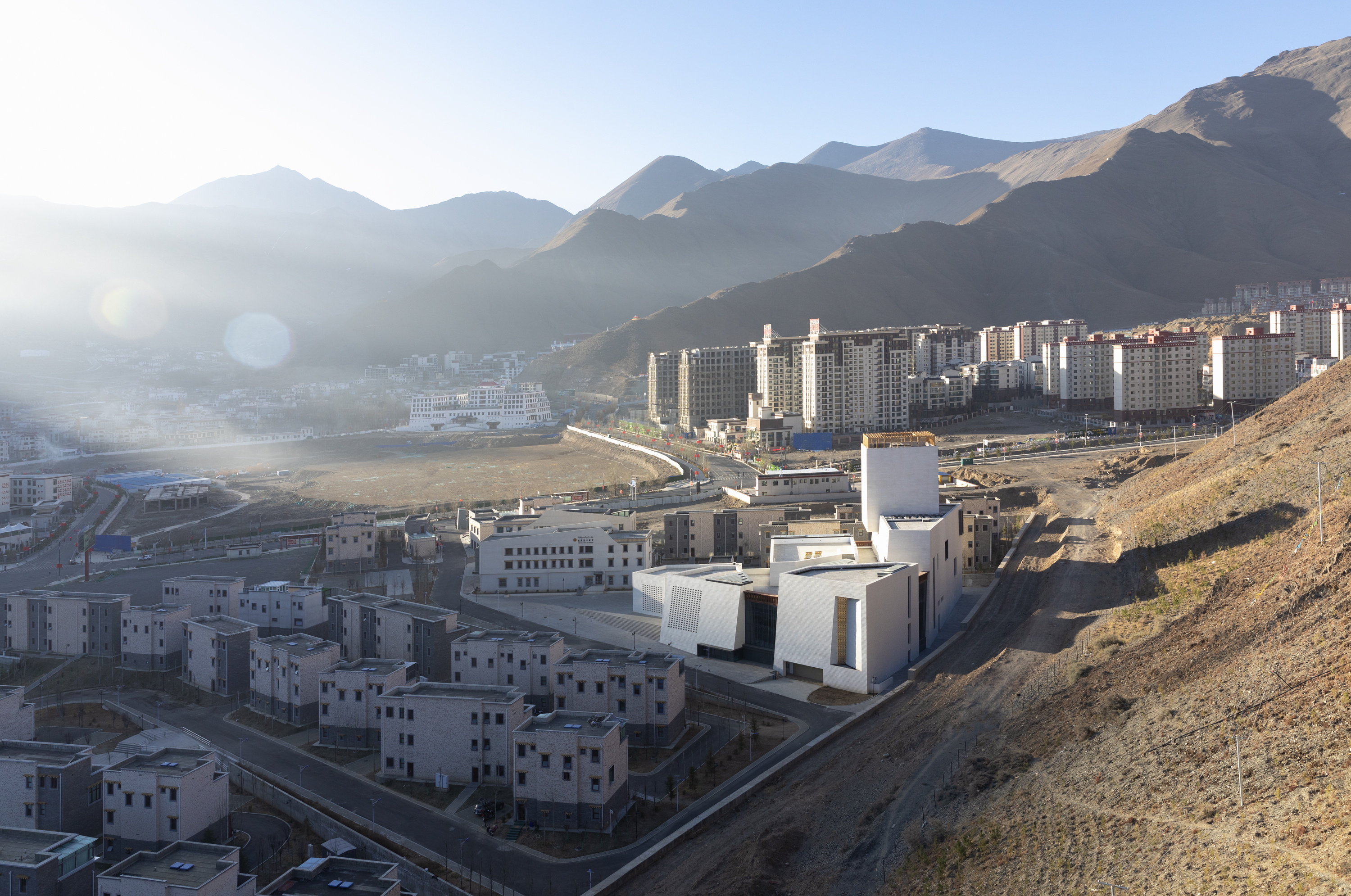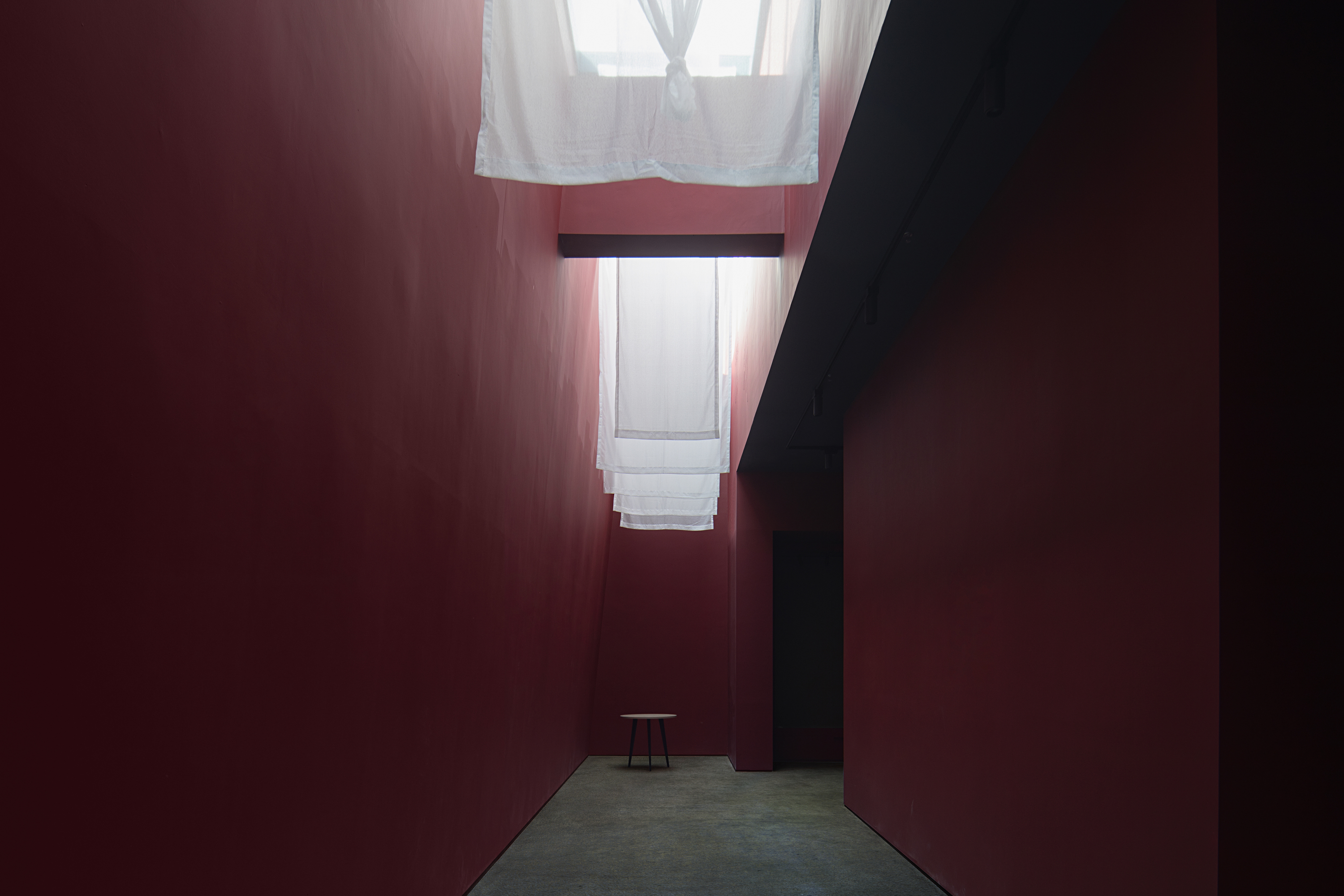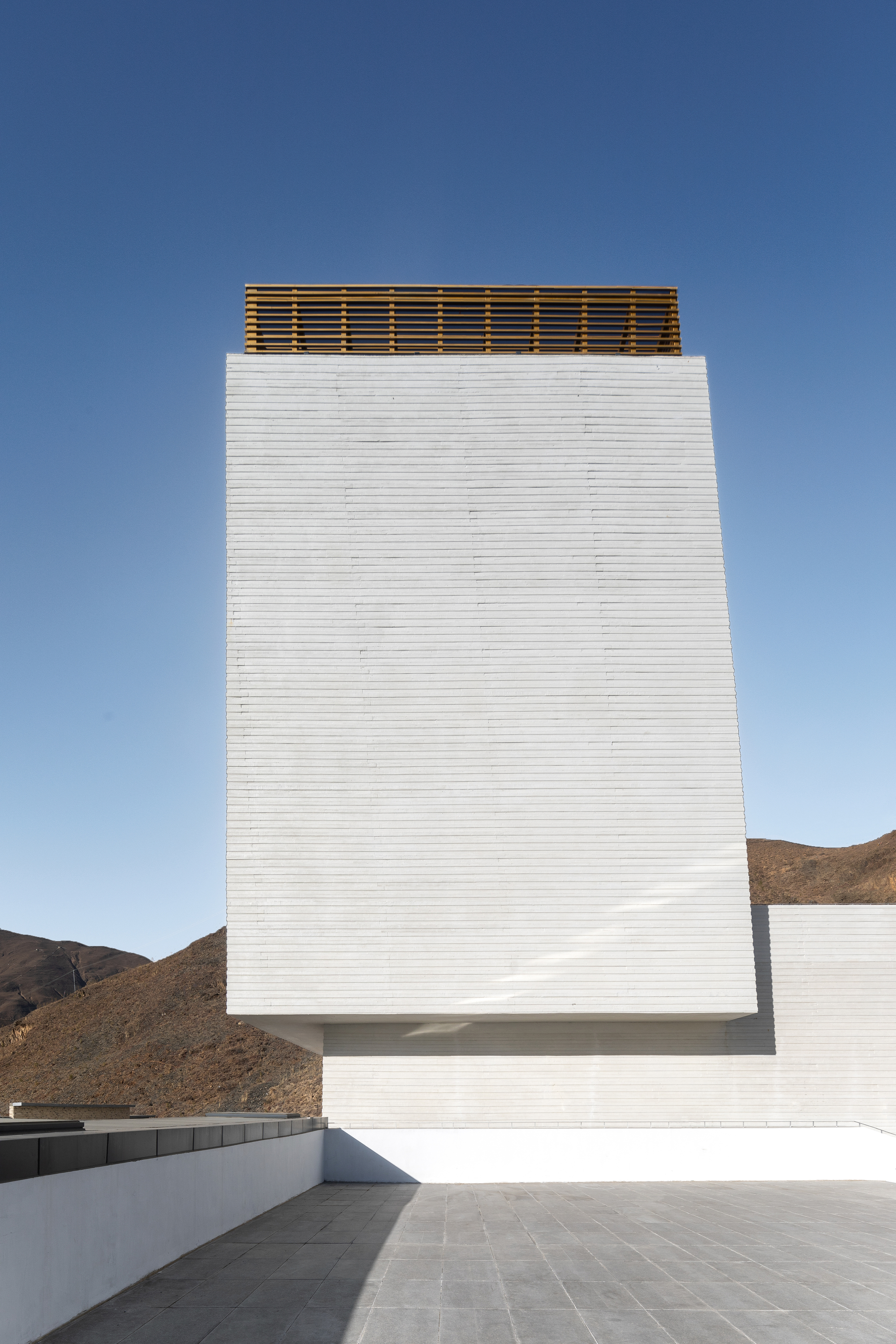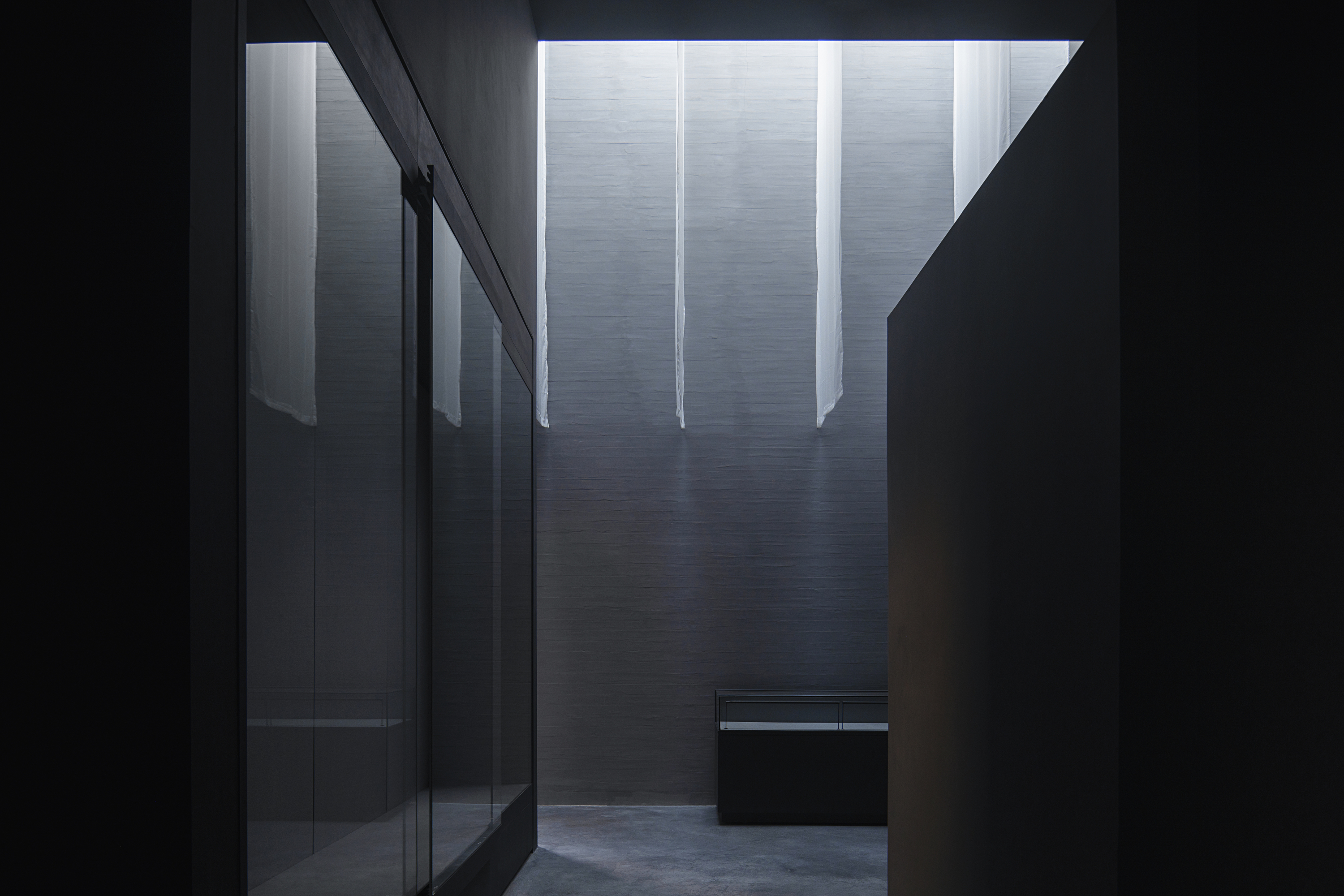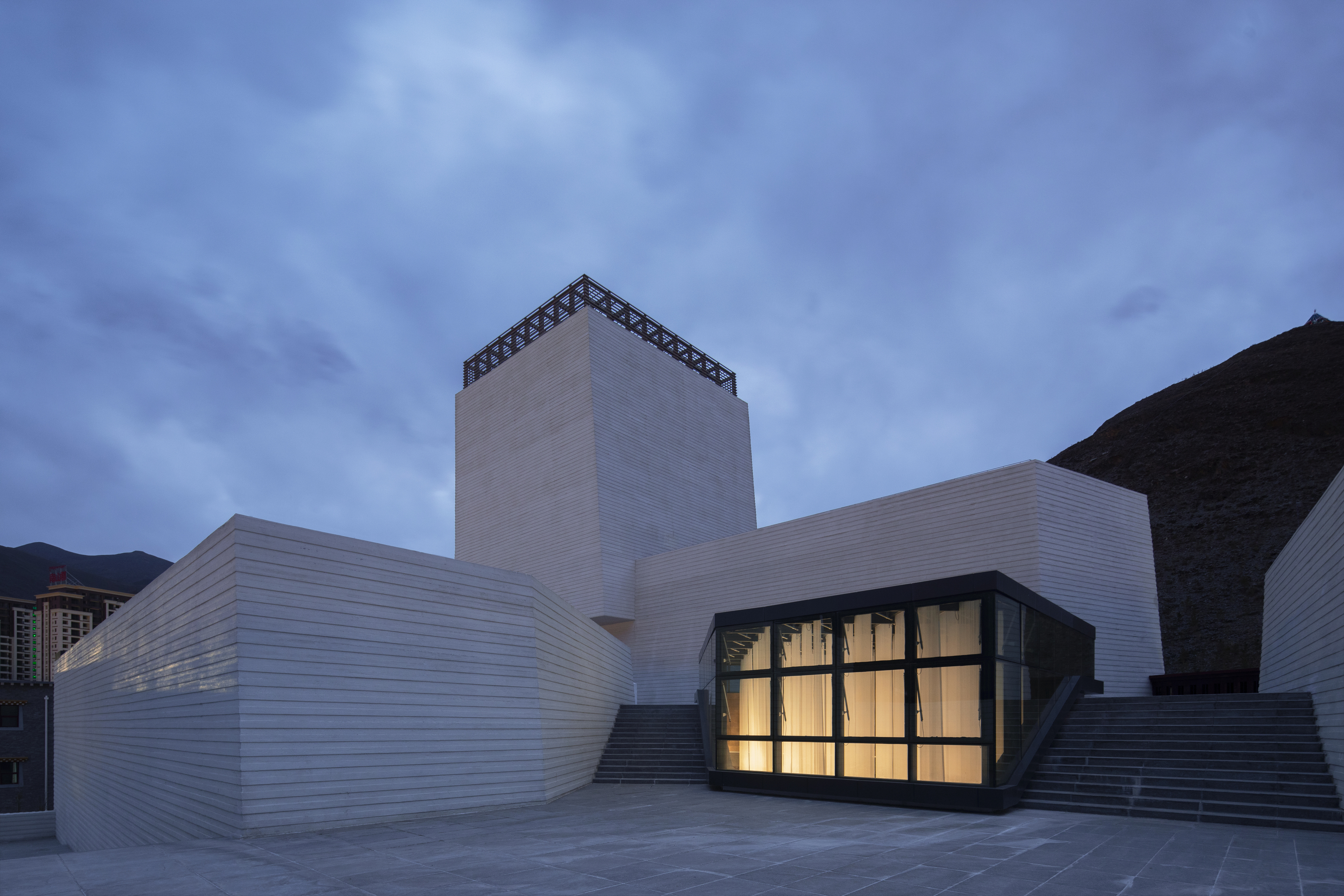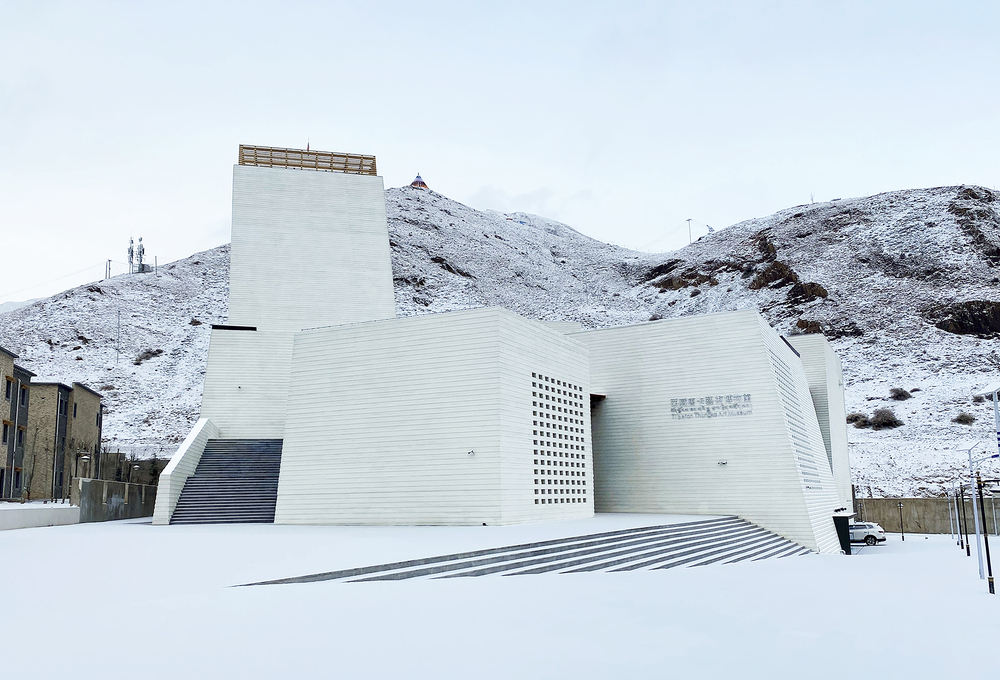
The design of the Thangka Museum honors the distinctness of Tibetan culture and aims to bring the art of Thangka painting to the public. Its planning incorporates both art and Buddhist culture to create a coherent understanding of Lhasa, Tibet.
Inspired by the Potala Palace and its structural composition along the Red Hill, the Lhasa Thangka Museum reproduces a similar combination of volumes through imitating the ascending topography. The exterior façade also delivers a rich knowledge about the site. Composed of local materials, the façade adopts a receding slope (batter) typical of traditional Tibetan architecture.
The interior of the museum is organized by the idea of the Noble Eightfold Path leading to liberation. While appreciating the beauty of Thangka painting, the visitor ascends in the building along the “path” and eventually arrives at a rooftop terrace that offers a panoramic view of the landscape and the Potala Palace. On the end of the rooftop terrace houses a tower that brings skylight into the building.
